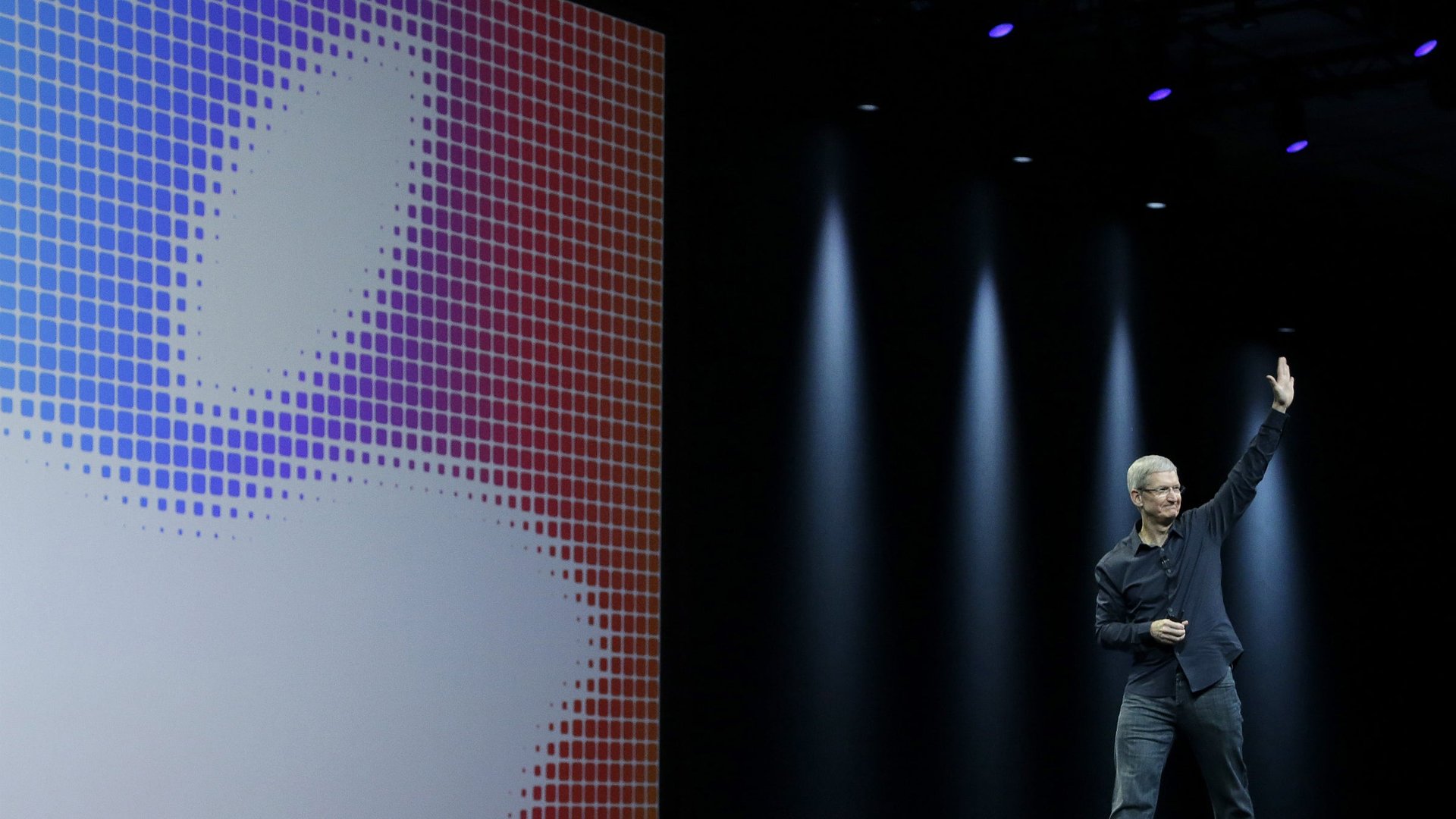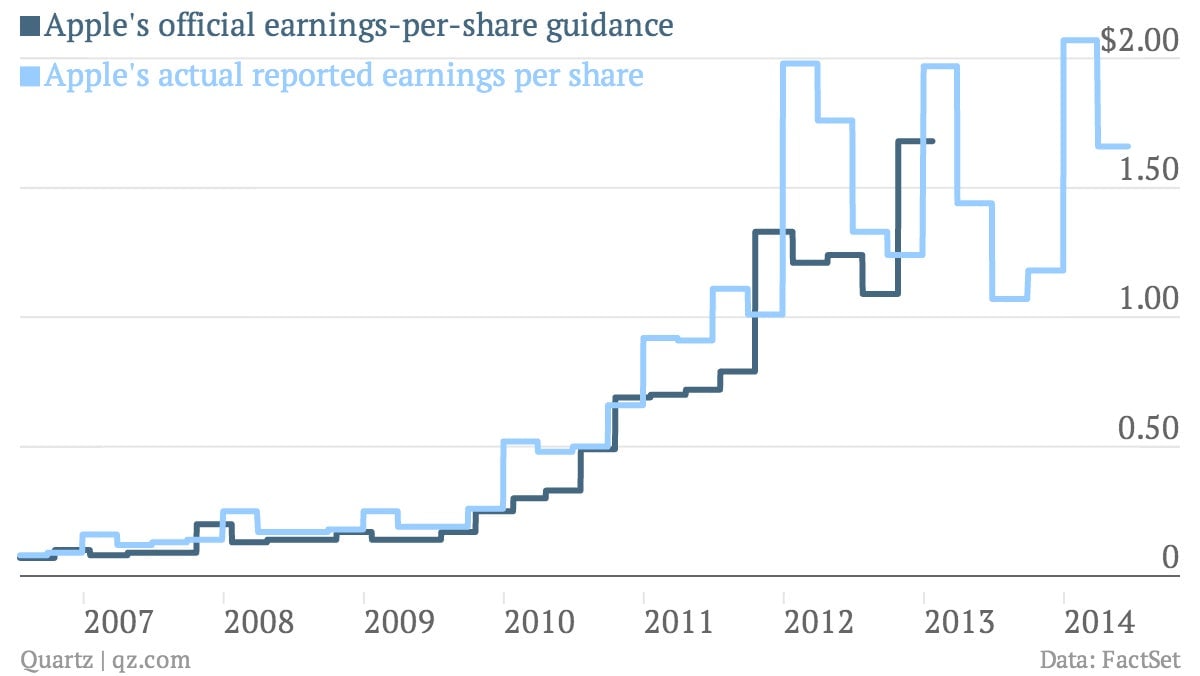The recent history of Apple in one chart
Sure, Apple shareholders aren’t seeing the kinds of gains that they used to. But let’s be clear: They don’t have anything to cry about. The company has doused investors with cash via dividends and buybacks recently. (It’s now among the world’s top dividend-paying companies.)


Sure, Apple shareholders aren’t seeing the kinds of gains that they used to. But let’s be clear: They don’t have anything to cry about. The company has doused investors with cash via dividends and buybacks recently. (It’s now among the world’s top dividend-paying companies.)
Still, Apple’s transformation from the world’s premier growth stock into, arguably, the world’s premier dividend play has been incredibly fast. And here’s why.

(For the record, the data on the chart above is adjusted for Apple’s recent seven-for-one split.)
During the headiest period of Apple’s growth, the technology giant was engaged in a perpetual expectations game with investors. The game worked like this: Apple would post killer quarterly results. At the same time, it would offer low-ball estimates of the coming quarter, in an attempt to keep investors’ sentiment from getting too frothy. Then the company would report the next quarter’s results, which clobbered expectations, while again low-balling estimates. And so it went, for years.
Until it went no more. In January of 2013, the company stopped playing the expectations game completely by ceasing to offer quarterly earnings guidance. And you can see why. Apple—while still generating some of the largest ever quarterly profits of any company outside the oil industry—just can’t move the needle like it used to.
This isn’t a sign of failure. This is math. As profits get larger and larger, it becomes more and more difficult to generate large-percentage growth. In other words, this is what a very successful maturing company looks like.